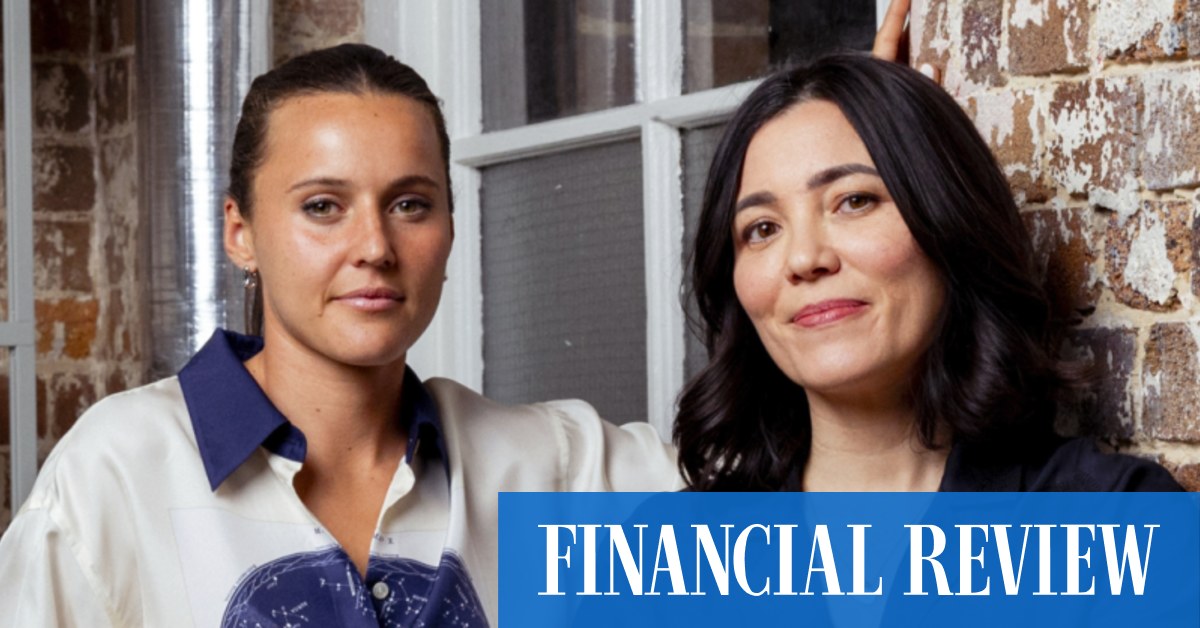Thursday night’s dinner, also attended by former Socceroo Craig Foster, was “a way to keep telling Hayley’s story in the lead-up to the Olympics”.
“The Olympics is big business,” says Macquarie University Business School’s Professor Jana Bowden, citing that 65 per cent of Gen X will watch the games, closely followed by 62 per cent of Millennials and Gen Z, according to YouGov polls. “It puts Olympic sponsors and their brand ambassadors in front of consumers and into their living rooms. That’s a tantalising eyeball opportunity for big brands.”
Fitting challenge
More often, though, aligning with the Olympics makes good brand sense, rather than being overtly commercially successful.
Sportscraft has been outfitting the Australian Olympic team since 2006. “It’s not a profit-making exercise,” says Elisha Hopkinson, CEO of APG & Co, which owns Sportscraft. “It’s very detailed and there are a lot of rules. It’s also time-consuming. You’re creating uniforms for everyone from gymnasts to weightlifters, so that is challenging.” Fittings begin months out from the games and involve between 600 and 1000 athletes, though the final team is more like 500.
“We do fittings all over the world, for athletes who may or may not be chosen,” Hopkinson says. Some require bespoke outfits as they fall outside the brand’s size ranges. Sportscraft staff are sent all over the world to do fittings, and a team is onsite at the games to attend to last-minute repairs and fittings.
Though there is little commercial impact, Hopkinson says the marketing alignment is powerful. “Our customers are Aussies, around 35 to 55 years old. They are watching the Games. Australians love sport, it’s what unites us. We are called Sportscraft because we were made for a sporting lifestyle. We have a loud voice as a brand, and we want to use that to get Aussies behind these athletes to support them.”
Likewise, Asics, which provides Australian athletes with shoes for the Games, and has released a limited edition Olympic supporter range that replicates some of the uniforms the athletes will wear, regards the event as “a way to elevate brand awareness”, says Sam Chew, general manager of product for Asics Oceania. “It’s an opportunity for us to support our athletes and build our equity as an innovative performance brand rather than chasing short-term sales.”
For brands, says Bowden, the Olympics’ “feel-good factor” is irresistible.
“There’s an obvious benefit in being the true-blue Aussie fashion brand that supports our Aussie champions – there’s immediate visibility, in-your-face brand recognition and there’s also a feel-good factor that consumers get when a local brand backs our sporting elite,” she says.
“Our athletes are relatable, marketable and bankable. They have a lot to offer because their narrative is about the everyday Australian – that’s a powerful human story that connects with consumers.”
Navigating the rules of the International Olympic Committee and the Australian Olympic Committee can be tricky, says July co-founder Athan Didaskalou. The luggage company is providing custom suitcases for Olympic athletes, but opted out of licensing the products for regular consumers.
“Licensing is scary territory – there are minimum product runs, and you want to make sure that sells through,” he says. “A partnership is different, it allows you to build the alliance and loyalty without that risk.”
Mr Didaskalou says that for July, the marketing exercise was a winning opportunity. “I can’t believe more brands don’t get more involved. There is something special about the Summer Olympics. From a brand perspective, this is our opportunity to show people who we are.”
Spotting a winner
Beauty brands, too, are keen to be part of the action. This week Australian fragrance brand The Raconteur released three scents that celebrate “the Olympics of life”, which founder Craig Andrade said was “a way to allude to excellence without really going down that official path”.
TBH Skincare recently released a line of “pimple patches” with the Matildas. Founder Rachael Wilde says the idea was floated to the brand’s social media followers, who “immediately asked for it to be real”.
“Beyond being an incredibly inspiring group of women and athletes, the Matildas really show that there’s power in embracing individuality, something we try to do at TBH,” Wilde says.
“It was no surprise to see that the Matildas players are influencers in their own right – their community is absolutely obsessed with them. The level of engagement is second to none.”
For Child and Oroton, being part of the Olympic story is “a way to ensure we are part of the national conversation”. Guests at the Oroton dinner were given twilly scarves in honour of Raso’s signature hair ribbon; they were so well received that Ms Child is thinking of making them available to the public.
“I would love to think about how we can expand that idea and offer it to what we know is tons of our customers who want to support the Matildas.”

